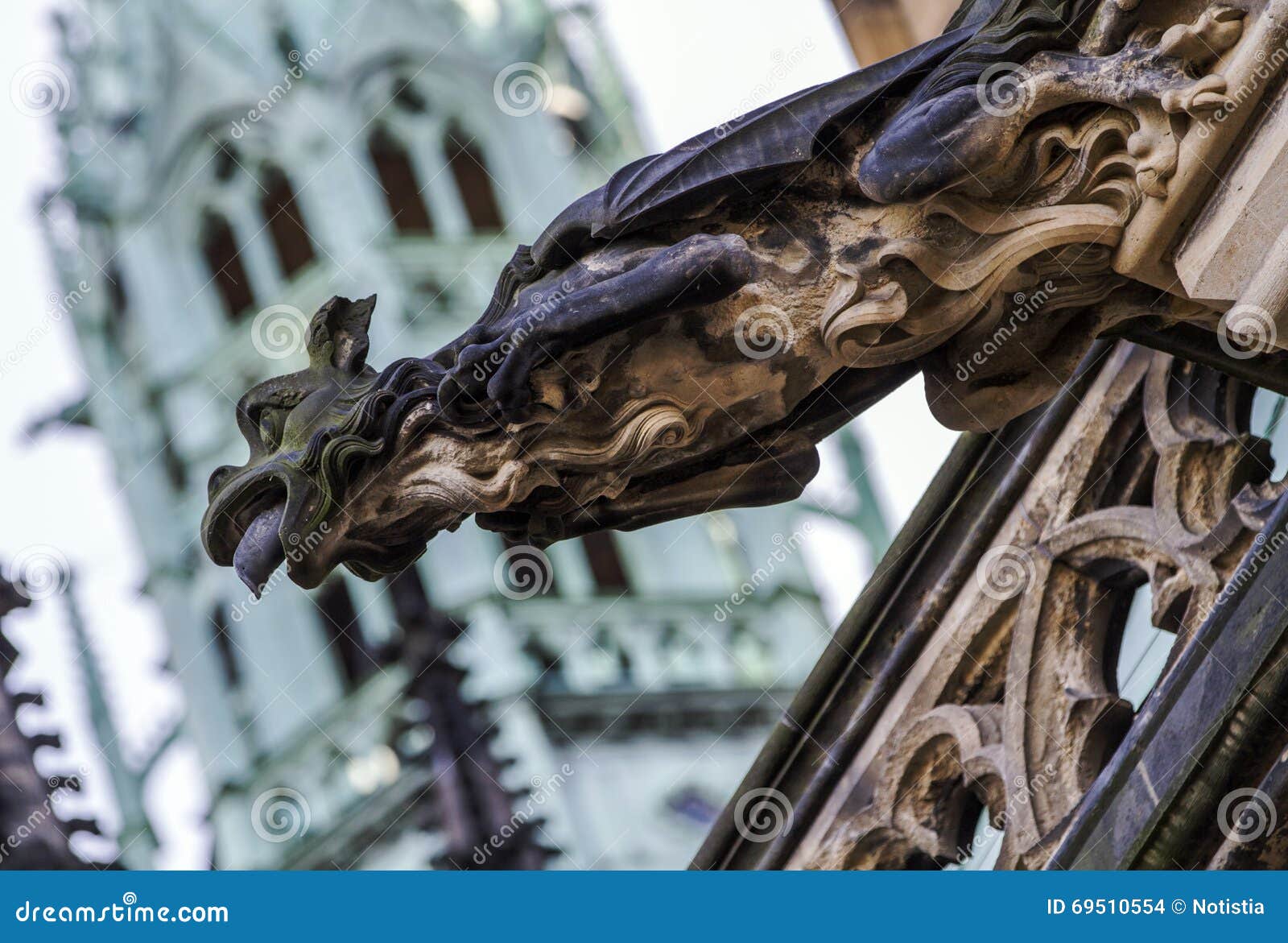

On the south façade is a spectacular 99-metre high tower, built by Peter Parler.


If you walk around the cathedral of Saint Vitus, make sure you look at the gargoyles, which with their fantastic forms brilliantly conceal the water outlets. Throughout its history, the cathedral has been a place of worship for Hussites and Calvinists. For this reason, inside you can appreciate different styles that range from Gothic through to modern art. In fact, the convulsive history of Prague, with wars, fires and sackings, meant that the cathedral was not completed until 1929. Many old constructions have been built over several centuries, although it is unusual that they last nearly six-hundred years, like those of the cathedral of Saint Vitus. But on his death in 1352 they called on the famous architect Peter Parler, who was the constructor of Charles Bridge, also begun during the mandate of Charles IV. The architect entrusted with the project at the beginning was the Frenchman Mathieu d’Arras, who designed a project similar to the Gothic cathedrals of his country. It was not until 1344 that the construction of the cathedral we see today began, under the reign of Charles IV. One century later, in 1060, a Romanesque basilica was built here. In 929, Wenceslas ordered a rotunda to be built dedicated to Saint Vitus. When you visit it, in reality you will be visiting more than 1,000 years of history of the city printed on its walls and recalled in its stained-glass windows. The cathedral of Saint Vitus is inside the grounds of Prague Castle and is the largest Gothic church in the country.


 0 kommentar(er)
0 kommentar(er)
